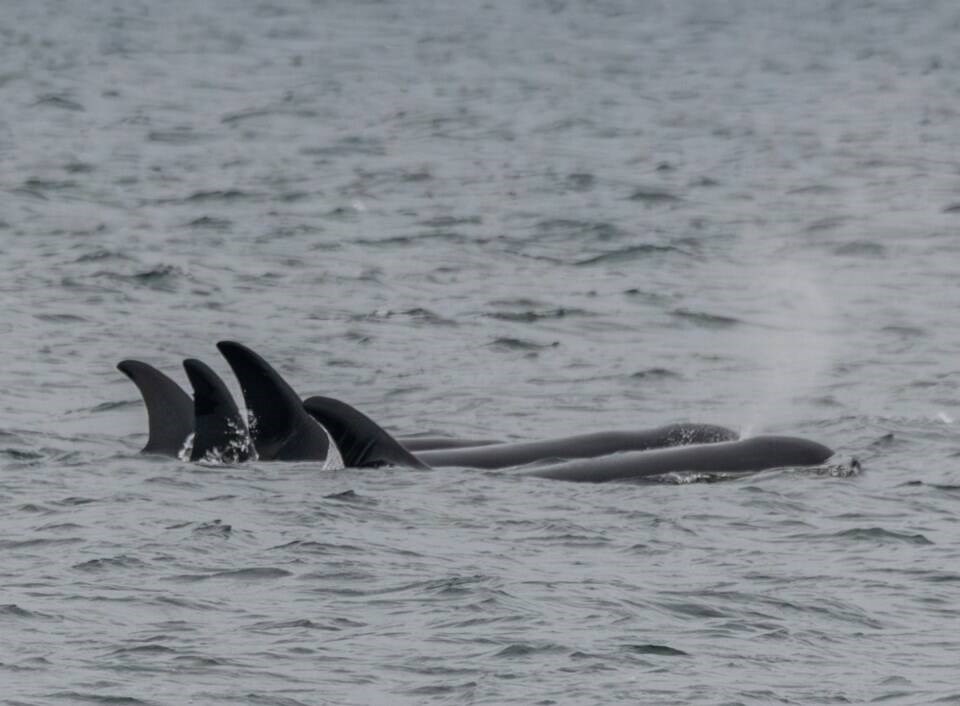If more changes aren’t made, prospects appear dim for the survival of the southern resident killer whale.
This population of around 75 individuals is heading toward extinction at a rate of one-to-two per cent annually, according to a study published Tuesday by researchers with B.C.-based Raincoast Conservation Foundation.
The recent paper follows a 2017 analysis that showed the group of whales had a 24-per-cent chance of extinction within a century. But the situation has worsened since then, explained Paul Paquet, co-author and senior scientist with Raincoast.
Three primary threats affecting the southern residents are dwindling stocks of chinook salmon, increased underwater noise from boat traffic and higher concentrations of industrial contaminants building up in the animals.
A failure to address these pressures in a more serious way could lead to an accelerated population decline, which picks up speed after two generations, in around 40 years from now, Paquet said.
Over time, these problems become amplified, he said. “We usually talk about the extinction vortex. And often that’s related to genetic issues having to do with inbreeding, common to small populations.”
Raincoast uses the term “bright extinction” to describe the decline of the southern resident killer whale, because they are one of the most researched animals at risk of dying out. Previous research has shown how the population has become increasingly inbred, an issue compounded by a recent finding that their genetics may be more isolated than previously understood.
Transient and resident killer whales were once thought to be distinct groups in terms of behaviour, but the same species, Paquet said. However, another new study suggests they are distinct species as well.
“There are fewer of them [in each species] now than would have been previously thought,” he said.
But potential improvements made in the threat areas drastically change the projected numbers of the southern residents over the next 100 years.
One of the most critical areas is their diet of chinook salmon. Less fish in the sea is just part of the problem.
“Some fish are not as easily available as they were previously because of disturbances that are taking place so that whales can’t access the fish,” Paquet said. “Also, over time the chinook salmon have gotten much smaller than they were originally.”
That means the resident cetaceans have to work harder for less return when hunting for a meal.
In the study, its authors advocate for several solutions to create an abundance of larger, more mature chinook. Those include moving Pacific Salmon Treaty fisheries in Alaska and B.C. away from rearing grounds and migration routes into terminal rivers and estuaries; not harvesting immature fish in marine fisheries; and allowing mature females to pass through terminal fisheries to spawning grounds.
Those changes could lead to a fish size increase of 40 per cent over 50 years, while also boosting the abundance of chinook, according to the research.
Raincoast to put pressure on governments, agencies to better protect killer whales
Science conducted on whale poop at a Raincoast lab in West Vancouver suggests that other similar populations, like northern resident killer whales, have been bouncing back in recent years despite similar diets and contamination levels.
“Increased availability of salmon, that’s positive. It would help, but it’s insufficient in itself to ensure that the population will actually persist,” Paquet said.
One of the current threats that will likely keep increasing is ocean noise
“We identified that as being a serious problem for killer whales,” Paquet said. “And it’s likely increasing because of development, new terminals [and] more shipping.”
With this data, Paquet and his colleagues will lobby governments at the provincial, state and federal levels, along with key bodies like the Department of Fisheries and Oceans, in hopes of directing stricter policy to better protect these whales.
The DFO did not comment on the new research directly, but said that 2024-specific measures to protect southern resident killer whales would be announced soon. Starting in 2019, the agency began adding new rules to protect southern residents, such as fishing closures and restricting speeds in certain areas.




